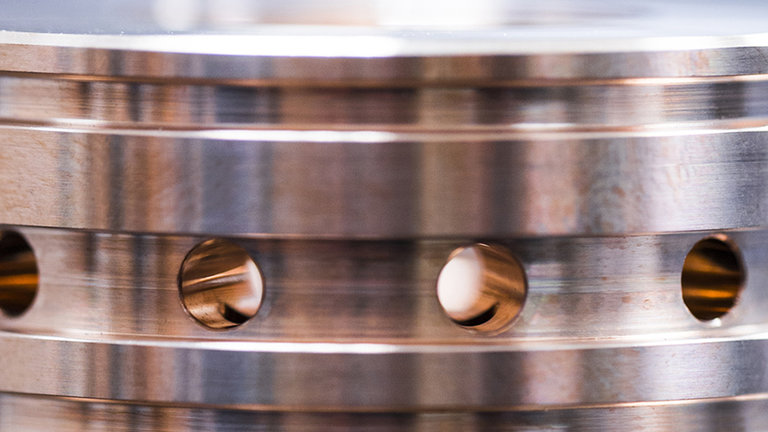Air Liquide: partnering research to expand the realm of possibilities
- Science

Studying the properties of matter, making objects or fluids levitate, pushing back the limits of nuclear magnetic resonance, developing superconductive materials. The opportunities opened up by the hybrid magnet being built at the CNRS National Laboratory for Intense Magnetic Fields (LNCMI) in Grenoble are vast. Air Liquide contributed to this unprecedented adventure by supplying the cryogenics that the magnet requires.
Intense magnetic fields are a powerful research tool. They make the visible invisible, reveal as-yet unknown properties of matter, produce magnetic resonance images with previously unseen resolutions, grasp the secrets of superconductive materials below critical temperatures, and more. A magnetic field is described as intense if it exceeds 20 teslas1, which is 400,000 times stronger than earth's magnetic field. These properties are already being used in a wide variety of projects, like NeuroSpin's medical imaging platform, the experimental ITER nuclear fusion reactor, or the in-depth study of graphene – a very promising material of the future, for the production of flexible flat screens, or the creation of ultra-fast nano-transistors, to a tripling of electric vehicles' battery capacity. There has even been talk of building a space elevator made from graphene!
But in order to exploit the extraordinary properties of intense magnetic fields, you first need to be able to generate them. Only a handful of laboratories in the world have the necessary equipment. The LNCMI is one of them. Every year, researchers from all over the world flock to its site in Grenoble to conduct continuous experiments under intense magnetic fields up to 36 teslas, or to Toulouse, for 90-tesla pulsed magnetic fields. To go even further, the LNCMI is building a magnet in Grenoble capable of generating a magnetic field of 43 teslas. Only a hybrid magnet, made up of an assembly of copper alloy electro-magnets and a superconductive magnet can produce such a powerful magnetic field.
Cryogenics crucial to the 43-tesla magnet
Adding a superconducting magnet with no electrical resistance at low temperatures, reduces the energy required to generate intense magnetic fields. For this, the LNCMI sought the help of cryogenics expert, Air Liquide. Read more on Cryoscope #58
